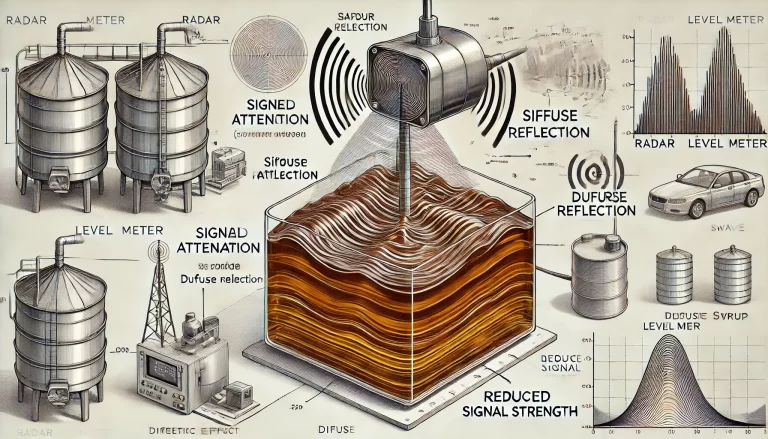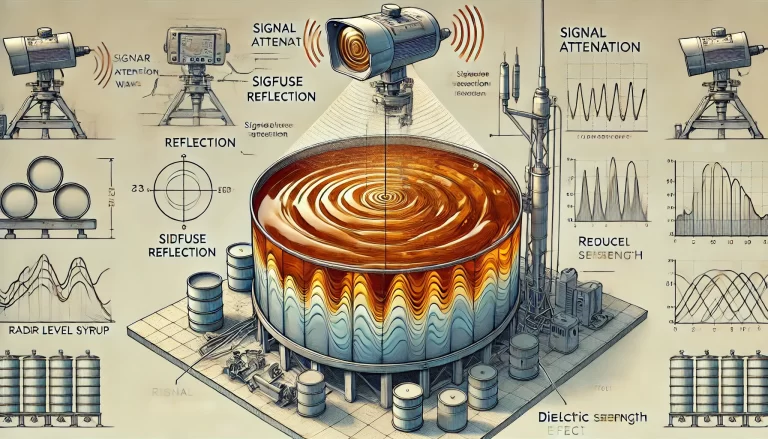When using radar level meters to measure high-viscosity media such as syrup, several challenges arise. This document delves into these challenges and offers potential solutions to improve measurement accuracy.
1. Impact of Syrup’s Viscosity on Radar Waves
Syrup is a thick liquid with much higher viscosity than water, which significantly affects radar wave propagation. When radar waves are emitted from the antenna and come into contact with the syrup surface, the high viscosity causes rapid energy attenuation, weakening the return signal. This makes it difficult for the radar level meter to capture reflected signals accurately, compromising measurement precision. Additionally, syrup’s adhesive nature leads to absorption or scattering of part of the radar waves, further diminishing the strength of the return signal.

2. Surface Properties of Syrup and Measurement Challenges
Syrup’s surface differs from low-viscosity liquids, often appearing uneven or wavy. This irregular surface causes diffuse reflection, where radar waves scatter in multiple directions and fail to return effectively to the meter’s receiver. The result is a weaker return signal and potential misjudgments that impact measurement accuracy. This issue becomes more pronounced when external forces, such as stirring, disrupt the syrup surface.
Another critical factor is the dielectric constant of the syrup, which reflects the medium’s ability to polarize in an electric field. Syrup typically has a high dielectric constant, meaning it reflects electromagnetic waves effectively but also absorbs and attenuates them more significantly. Selecting an appropriate radar level meter model that considers these dielectric characteristics is essential to ensure optimal performance.

3. Potential Solutions to Measurement Challenges
Several solutions can address the above challenges:
- Choosing a Suitable Radar Level Meter Model: A frequency-modulated continuous wave (FMCW) radar level meter generally performs better with high-viscosity media than a traditional pulse radar level meter.
- Optimizing Installation Position and Angle: Proper placement can minimize the impact of surface irregularities on measurements.
- Regular Calibration: Ensuring the radar level meter operates under optimal conditions through regular calibration improves measurement accuracy.
Future research may explore new technologies and methods to overcome challenges associated with measuring high-viscosity media, further enhancing the reliability and precision of radar level meters.
